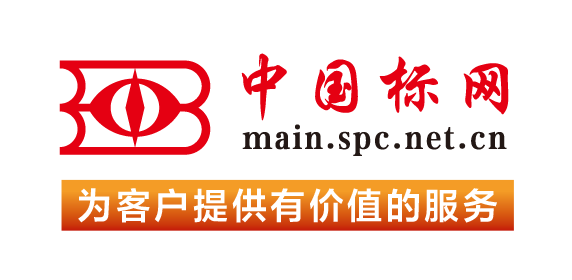【国外标准】 Standard Test Method for Determination of Rolled Erosion Control Product (RECP) Performance in Protecting Earthen Channels from Stormwater-Induced Erosion
本网站 发布时间:
2024-02-28
开通会员免费在线看70000余条国内标准,赠送文本下载次数,单本最低仅合13.3元!还可享标准出版进度查询、定制跟踪推送、标准查新等超多特权!
查看详情>>
适用范围:
5.1 This test method evaluates RECPs and their means of installation to:5.1.1 Reduce soil loss and sediment concentrations in stormwater runoff under conditions of varying channel conditions and soil type;5.1.2 Function within a composite system acting as vegetative reinforcement; and5.1.3 Improve water quality exiting the area disturbed by earthwork activity by minimizing mobilization of in-situ particles within the streambed.5.2 This test method models and examines conditions typically found on construction sites involving earthwork activities, including: highways and roads; airports; residential, commercial and industrial developments; pipelines, mines, and landfills; golf courses; etc.5.3 This test method is a performance test, but can be used for quality control to determine product conformance to project specifications. Caution is advised since information regarding laboratory specific precision is incomplete. For project specific conformance, unique project-specific conditions should be taken into consideration.1.1 This test method covers the guidelines, requirements and procedures for evaluating the ability of Rolled Erosion Control Products (RECPs) to protect earthen channels from stormwater-induced erosion. Critical elements of this protection are the ability of the RECP to:1.1.1 Neutralize and absorb the hydraulic force of stormwater, thereby reducing soil particle loosening through “scour” mechanisms;1.1.2 Slow runoff and encourage sedimentation, thereby reducing soil particle transport downstream;1.1.3 Absorb shear forces of overland flow;1.1.4 Trap soil particles beneath; and1.1.5 Promote the establishment of vegetation.1.2 This test method utilizes full-scale testing procedures, rather than reduced-scale (bench-scale) simulation, and is patterned after conditions typically found on construction sites prior to and after revegetation work. Further, procedures for evaluation of baseline conditions are provided. Thus, test preparation, test execution, data collection, data analysis and reporting procedures herein are intended to be suitable for testing of bare soil, unvegetated RECP, vegetated soil and vegetated RECP conditions.1.3 This test method provides a comparative evaluation of an unvegetated RECP to baseline bare soil conditions and a vegetated RECP to a baseline, vegetated condition under controlled and documented conditions.1.4 The values stated in SI units are to be regarded as standard. The inch-pound units given in parentheses are provided for information purposes only.1.5 This standard does not purport to address all of the safety concerns, if any, associated with its use. It is the responsibility of the user of this standard to establish appropriate safety, health, and environmental practices and determine the applicability of regulatory limitations prior to use. Also, the user must comply with prevalent regulatory codes, such as OSHA (Occupational Health and Safety Administration) guidelines, while using the test method.1.6 This international standard was developed in accordance with internationally recognized principles on standardization established in the Decision on Principles for the Development of International Standards, Guides and Recommendations issued by the World Trade Organization Technical Barriers to Trade (TBT) Committee.
标准号:
ASTM D6460-19
标准名称:
Standard Test Method for Determination of Rolled Erosion Control Product (RECP) Performance in Protecting Earthen Channels from Stormwater-Induced Erosion
英文名称:
Standard Test Method for Determination of Rolled Erosion Control Product (RECP) Performance in Protecting Earthen Channels from Stormwater-Induced Erosion标准状态:
Active-
发布日期:
-
实施日期:
出版语种:
- 其它标准
- 上一篇: ASTM D6443-14(2019)e1 Standard Test Method for Determination of Calcium, Chlorine, Copper, Magnesium, Phosphorus, Sulfur, and Zinc in Unused Lubricating Oils and Additives by Wavelength Dispersive X-ray Fluorescence Spectrometry (Mathematical Correction Procedure)
- 下一篇: ASTM D6469-20 Standard Guide for Microbial Contamination in Fuels and Fuel Systems
- 推荐标准
- ASTM 51401-21 Standard Practice for Use of a Dichromate Dosimetry System
- ASTM 51956-21 Standard Practice for Use of a Thermoluminescence-Dosimetry System (TLD System) for Radiation Processing
- ASTM A1010/A1010M-24 Standard Specification for Higher-Strength Martensitic Stainless Steel Plate, Sheet, and Strip
- ASTM A1016/A1016M-24 Standard Specification for General Requirements for Ferritic Alloy Steel, Austenitic Alloy Steel, and Stainless Steel Tubes
- ASTM A105/A105M-24 Standard Specification for Carbon Steel Forgings for Piping Applications
- ASTM A1064/A1064M-24 Standard Specification for Carbon-Steel Wire and Welded Wire Reinforcement, Plain and Deformed, for Concrete
- ASTM A108-24 Standard Specification for Steel Bar, Carbon and Alloy, Cold-Finished
- ASTM A1080/A1080M-24 Standard Practice for Hot Isostatic Pressing of Steel, Stainless Steel, and Related Alloy Castings
- ASTM A1090/A1090M-19(2024) Standard Specification for Forged Rings and Hollows for Use as Base Plates in Power Transmission Structures
- ASTM A1115/A1115M-24 Standard Practice for Construction of Mechanically Stabilized Earth Walls with Inextensible Soil Reinforcement
- ASTM A1128-24 Standard Specification for Stainless Steel Shielded, Rubber Gasketed Couplings Having an Integral Restraint Feature for Joining Hubless Cast Iron Soil Pipes and Fittings Where External Restraint Is Required
- ASTM A179/A179M-24 Standard Specification for Seamless Cold-Drawn Low-Carbon Steel Heat-Exchanger and Condenser Tubes
- ASTM A234/A234M-24 Standard Specification for Piping Fittings of Wrought Carbon Steel and Alloy Steel for Moderate and High Temperature Service
- ASTM A242/A242M-24 Standard Specification for High-Strength Low-Alloy Structural Steel
- ASTM A249/A249M-24a Standard Specification for Welded Austenitic Steel Boiler, Superheater, Heat-Exchanger, and Condenser Tubes
 我的标准
我的标准 购物车
购物车 400-168-0010
400-168-0010














